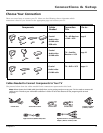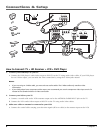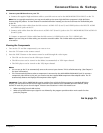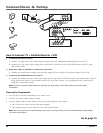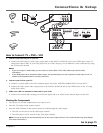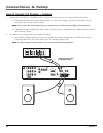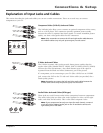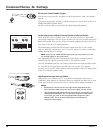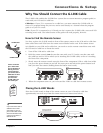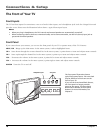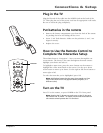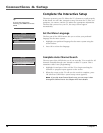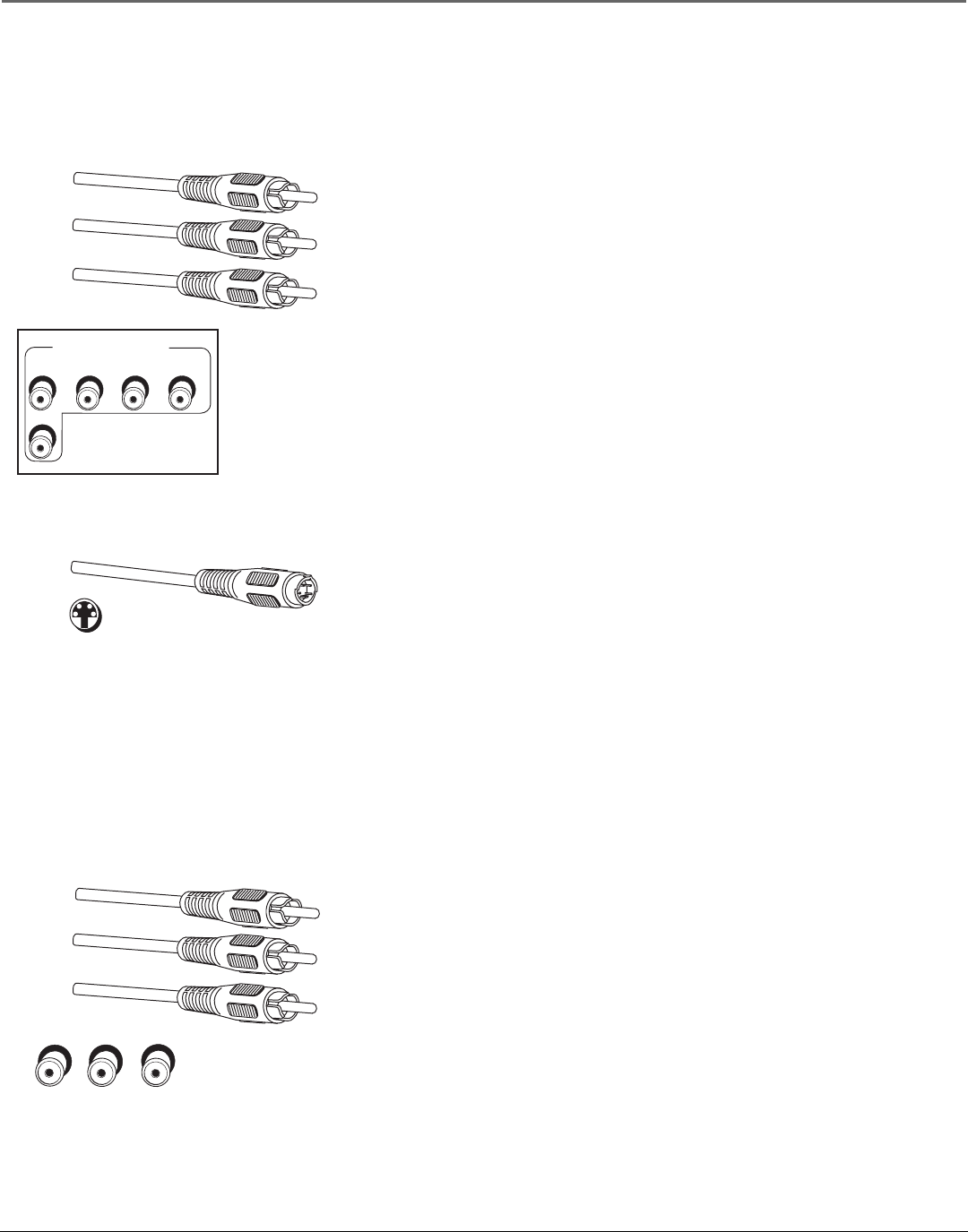
Connections & Setup
Chapter 1 13
Explanation of Input Jacks and Cables
This section describes the jacks and cables you can use to make connections. There are several ways to connect
components to your TV.
Component Video (Y•Pb•Pr) Jacks and Cables
The Y•Pb•Pr jacks allow you to connect an optional component video source,
such as a DVD player. This connection provides optimum picture quality
because the video is separated into three signals. To ensure maximum picture
quality, use three video-grade cables for the connection.
Note: Also, remember to connect the left and right audio cables because
the Y•Pb•Pr cables carry only the picture signal, not the sound.
S-Video Jacks and Cables
The S-Video (separate video) jacks provide better picture quality than the
regular video jacks (labeled INPUT1 VIDEO; INPUT2 VIDEO; INPUT3 VIDEO)
because the color (chrominance, also called chroma) part of the signal is
separated from the black and white (luminance) part of the picture.
If a component you’re connecting to your TV (like a DVD) has an S-VIDEO
jack, connect the DVD to the TV with an S-Video cable (not provided) for a
better quality picture.
Note: Remember to connect the left and right audio cables because the
S-Video cable carries only the picture signal, not the sound.
Audio/Video Jacks and Cables (RCA-type)
These jacks are used for most audio/video connections between components.
The audio/video jacks are often color coded (yellow for video, red for right
audio, and white for left audio). This is also called composite video.
Note: If your component has only one input for audio (mono), connect it
to the left (white L/Mono) audio jack on the TV and don’t connect the
right audio part of the cable.
AUDIO
R
L
Y
P
B
P
R
COMPONENT VIDEO INPUT
S-Video Jack
Audio/Video Jacks





